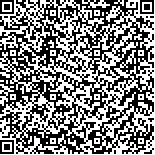Archive > Volume 43 Issue 11 > 2017,43(11):1420-1430. DOI:10.7519/j.issn.1000-0526.2017.11.011 Prev Next
Applicability Test of Two Common Indexes for Spring Maize Drought Grade in Northeast China
- Article
- Figures
- Metrics
- Preview PDF
- Reference
- Related
- Cited by
- Materials
Abstract:
monitoring, early warning and assessment, and its applicability is related to the quality of agricultural meteorological service and the effect of disaster prevention and mitigation. By using daily meteorological data, soil relative moisture data, spring maize growth and development observation data and maize yield data in 1981-2012 from 31 spring maize representative stations in Northeast China, the application effect of soil moistrue and water deficit index indicators for spring maize drought grade are tested, and their applicability differences are compared. By using the data from 2013 to 2016 in Heilongjiang Province, an example is analyzed. The results show that the soil moisture indicator and the water deficit index indicator are suitable for determining spring maize drought grades in different growth stages in Northeast China and they have good consistency. The same proportion of the two sets of indicators to determine the drought grade of sping maize is about 75%. The same and basically same proportion is about 95%. Identification effect of the two sets of indicators are good on the historic and recent maize drought events, the accuracy of drought identification by soil moisture indicator and water deficit index are above 80% and 75% respectively, and the identification effect of soil moisture indicator is better. The suitability of the two sets of indicators in early and mid stage is slightly better than that in later stage. The application effect in three provinces in Northeast China is better than that in East of Inner Mongolia. In some drought years, the drought grade determined by water deficit index is higher, so when the results determined by the two sets of indicators are different, it should be based on the results of the soil relative moisture indicator.
Keywords:
Project Supported:
Clc Number:
P49


Mobile website









